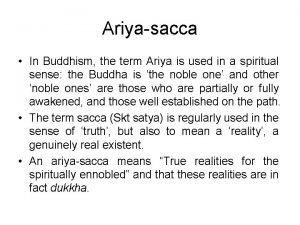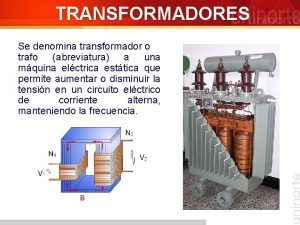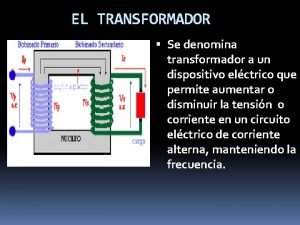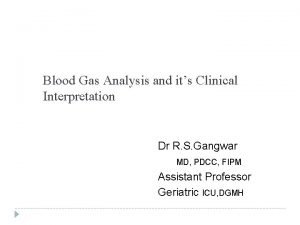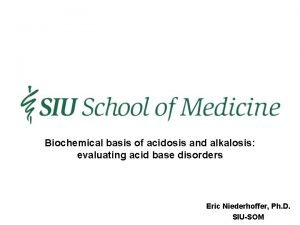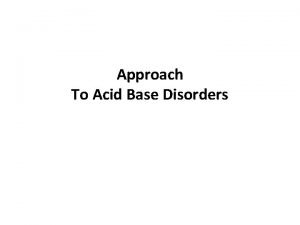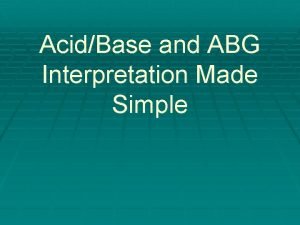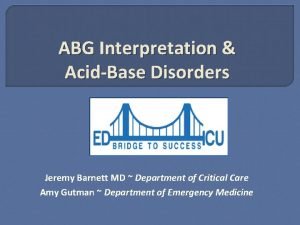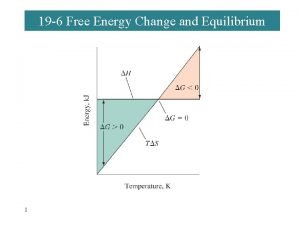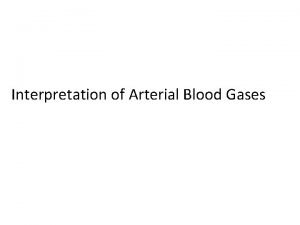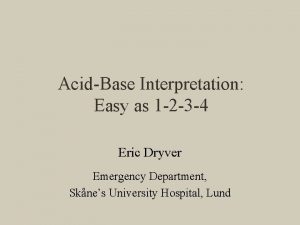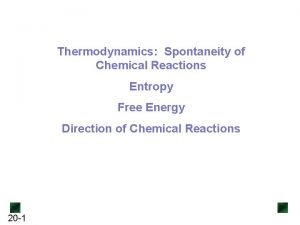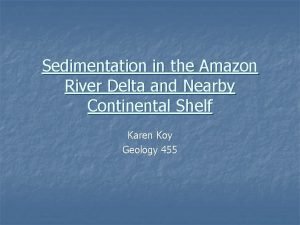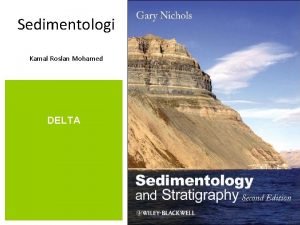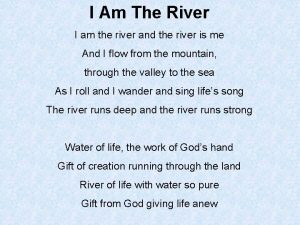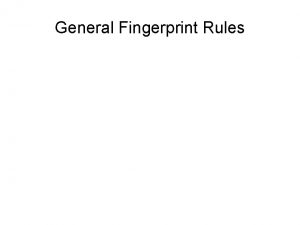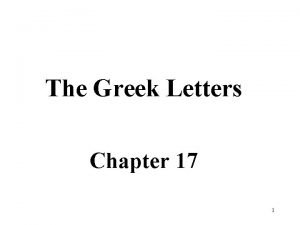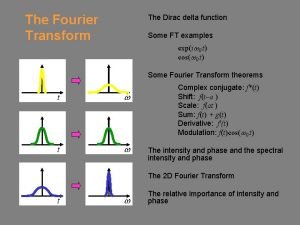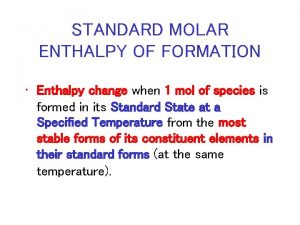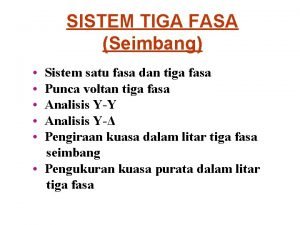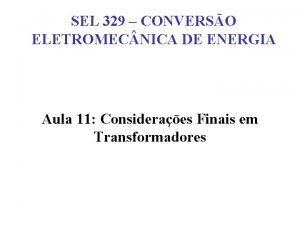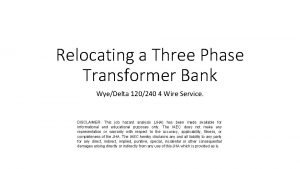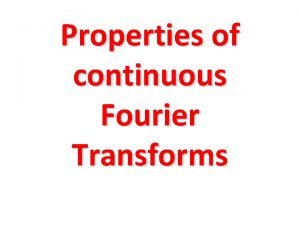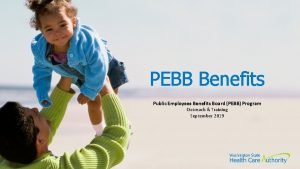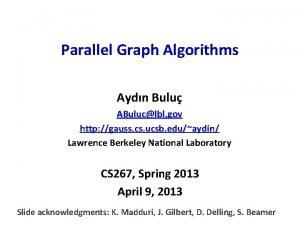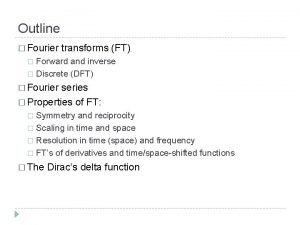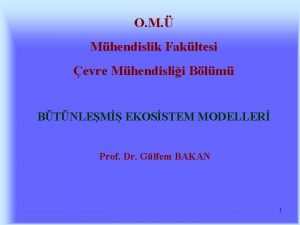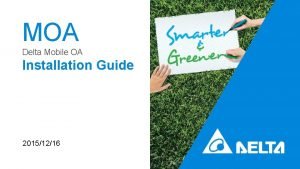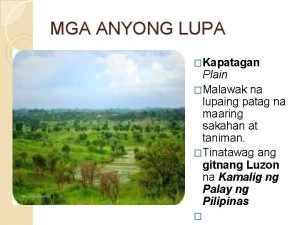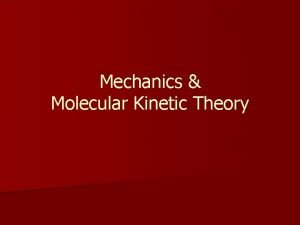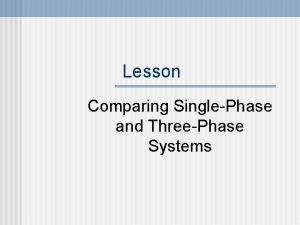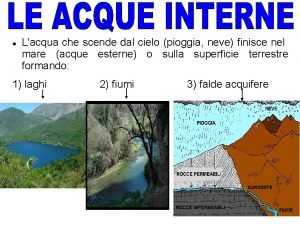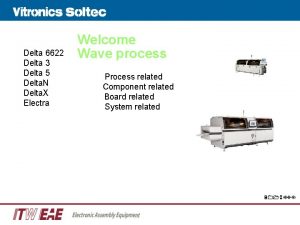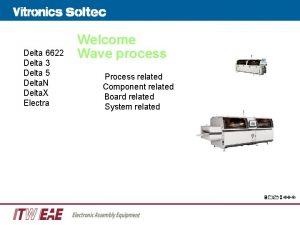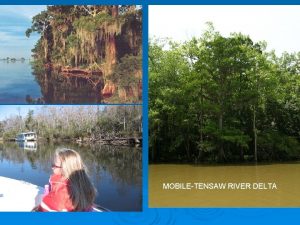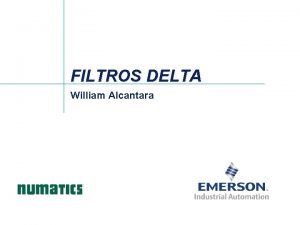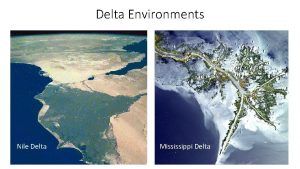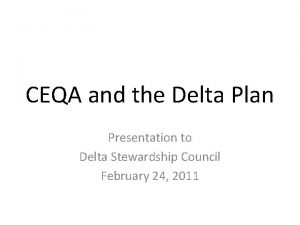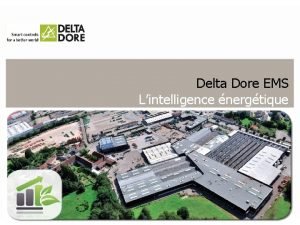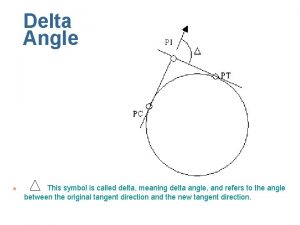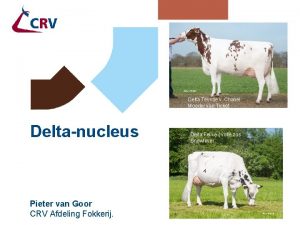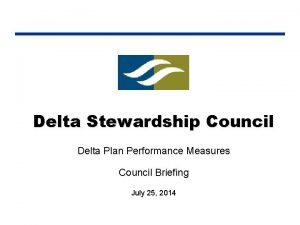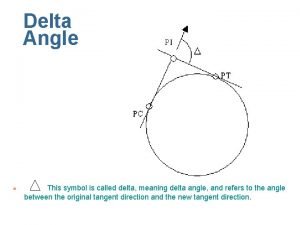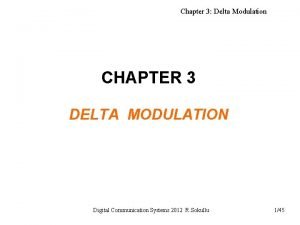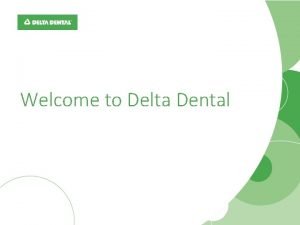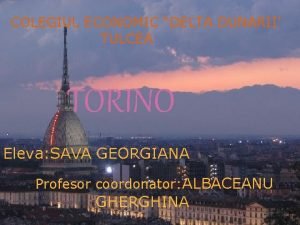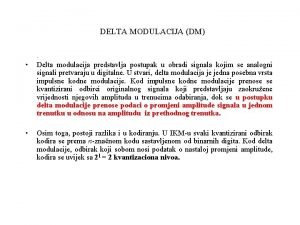Po river Po river delta and Sacca di


















































- Slides: 50

Po river , Po river delta and Sacca di Goro lagoon Pierluigi Viaroli & Gianmarco Giordani Department of Environmental Sciences, University of Parma di Parma José M. Zaldivar JRC-EC, Ispra Chiara Mocenni Center for Complex System Studies, University of Siena Silvano Bencivelli Environmental Office, Province of Ferrara

The Po river main features and environmental issues

Po river watershed Sacca di Goro

NOAA-NESDIS National Geophysical Data Center, Boulder, Colorado, USA Urbanisation in the Po river catchment as measured with the light emission at night (mean annual emission) Light blue = no light emission Black = high-intensity light emission in both 1992 and 2000 Red = light intensity increased from 1992 to 2000 Yellow = new light source in 2000

Human population = ~ 16, 500, 000 Pig population = ~ 5, 000 Cattle population = ~ 4, 000 35 % of the National Agriculture Production 55% of the National Animal Production 37% of the National Industrial Production Po River – Mean Annual Discharge 1961 -1990 = 46 *109 m 3 2003 -2007 = 29 -35 *109 m 3 Po River watershed – annual water demand agriculture = 16. 5 *109 m 3 industry = 1. 5 *109 m 3 municipal = 2. 5 *109 m 3 Data source G. Bortone, Regione Emilia Romagna Po River Basin Authority

P and N loadings eutrophication of Adriatic Sea Dissolved inorganic (violet) and total (red) phosphorus loadings delivered from the Po river to the Adriatic Sea 1968 -1993: Provini et al. , 1992; Provini & Binelli, 2006 1999 -2007: Viaroli et al, 2008 Nitrate loadings delivered from the Po river to the Adriatic Sea 1968 -1993: Provini et al. , 1992; Provini & Binelli, 2006 1999 -2007: Viaroli et al, 2008

River discharge - Change Point Analisys of daily river discharge of the Po River from 1991 to 2007. The blue boxes represent time periods with water discharges that are statistically different. See also Zanchettin et al. , 2008, who analysed the Po river flows from the last two centuries Viaroli et al. , 2008. P and N loadings under altered hydrological conditions in the Po River. A project funded by the Po River Basin Authority (2007 -2008). Final Project Report

Po river: number of days with water discharge number of days < 500 m 3 s-1 (line) and < 250 m 3 s-1 (bar) year P. Viaroli et al. , 2008. P and N loadings under altered hydrological conditions in the Po River. A project funded by the Po River Basin Authority (2007 -2008). Final Project Report

SALINE WEDGE IN THE PO RIVER DELTA With water discharge < 250 m 3 s-1 the saline wedge reaches up to 25 km upstream Salinity 20 psu (bottom water) 30 June 2003 km upstream

Relationship between saline wedge (km upstream) and river discharge (mean of the five days before) in the Po di Goro River from July 2003 to April 2007 (data from Provincia di Ferrara, Unità Acque Costiere e Pesca and ARPA - Regione Emilia Romagna)

Effects of altered hydrology on P loading (flash loads? )

P loading from flood events is not readily available to primary producers 19 september 2007 26 November 2007 Non flood Flood 725 3419 102. 5± 11. 9 1339. 6± 252. 6 164 1140 Exchangeable PO 4 (µg P L-1) 34. 3± 1. 6 65. 8± 4. 5 Iron bound (µg P L-1) 16. 3± 5. 4 59. 7± 3. 6 PO 4 -Ca authigenic (µg P L-1) 22. 1± 2. 2 247. 1± 76. 7 PO 4 -Ca detritic (µg P L-1) 4. 2± 2. 5 80. 1± 10. 9 89. 1 687. 3 River discharge (m 3 s-1) Suspended Particulate Matter (mg L-1) Total Particulate Phosphorus (µg P L-1) Particulate Organic P (POP) (µg L-1)

Less than 15% of the total N loading is delivered by flood events

The Sacca di Goro lagoon Features and threats • Eutrophication of the Ebro, Po and Rhone deltas (198991) • CLEAN: coastal lagoons and anaerobic processes (199394) • NICE: nitrogen cycling in estuaries (1996 -98) • ROBUST: the role of buffering capacity in stablising coastal lagoon ecosystems (1996 -98) • DITTY: development of an Information Technology Tool for the Management of European Southern Lagoons under the influence of river-basin runoff (2003 -06) • 3 national relevant projects (PRIN 1998 -2004) • Projects funded by province, region and ministry of agriculture and fishery

Sacca di Goro (Po river delta, Italy)



Previous applications of the DPSIR scheme Sacca di Goro lagoon Meteo and climate changes Eutrophication Contamination (chemical+microbial) Clam quantity and quality Agriculture crops Agriculture Aquaculture Urbanisation Industry Anoxia Policies and decision: canal dredging barrier cut Mollusc kill Clam marketing Agr marketing Tourism revenue

Natural park Local economy e. g. employers Aquaculture • Enlarge • Constant • Restrict ? Clam production Environmental quality Oxygen SPM demand Climate change River discharge Actions Canal dredging Littoral barrier cut Bottom nourishment Out of control?

Po di Volano – Sacca di Goro Watershed Po River Delta Po River CB A B PG GI SG PV PH Comacchio lagoon

Po di Volano watershed - Land use changes from 1991 to 2001 (ISTAT census data). Surface data considered here accounts for approximately 90% of the total surface area

Potential loadings (tons/year) that are generated by different activities in the Po di Volano watershed: • Data from ISTAT census 1991 and 1992 transformed with IRSA-CNR coefficients (Barbiero et al. , 1991 and 2000) • Atmospheric loadings have been obtained from rain chemistry data (RIDEP, 1991 -93)

Sacca di Goro aquaculture development the catch fishery is declining sea-food poduction is moving in the near-shore and/or in lagoons Crossland, C. J. , Kremer, H. H. , Lindeboom, H. J. , Marshall Crossland, J. I. , Le Tissier, M. D. A. , 2005. Coastal Fluxes in the Anthropocene. The Land-Ocean Interactions in the Coastal Zone. Project of the International Geosphere. Biosphere Programme. Global Change - The IGBP Series n° XX . Springer, 232 p.

Annual clam production (t yr-1) in the Sacca di Goro lagoon Employers: ca. 1, 600 total annual revenue: up to 100 M€

Clam farming in Sacca di Goro lagoon Actual extension of the clams farming concessions: 13. 0 km 2 Not completely exploited

Impact of mussel and clam farming on sediment Mussels: Only organic enrichment Clams: Organic enrichment and sediment reworking Typical biomass under farming conditions – harvesting in late spring (Northern Adriatic lagoons)

Sediment carbon oxidation and oxygen consumption rates Carbon oxidation Oxygen consumption

Sediments sulphate reduction rates

y: mmol m-2 h-1 Clam farming contributes to benthic metabolism modifications respiration as a function of clam biomass x: clam biomass (g dw m-2) Clam farms cover 8 km 2. At 20 °C, with an average biomass of 200 g. m-2 oxygen demand is – 8. 97 mmol m-2 h-1. The background (sediment only ) is -2. 97 mmol m-2 h-1. In summer, at the lagoon scale, clams account for an increase of about 38% of oxygen demand (modified from Bartoli et al. , 2001)

Clam harvesting impacts on sediment quality and fluxes . x 102 =

Sediment dredging for clam harvesting induces changes of resuspension and benthic fluxes. Experiments with core incubation were performed to simulate the effects of clam harvesting. Fluxes were determined with conventional incubation techniques (units: mmol m-2 h-1) Pre-H: before harvesting, H: during harvesting, Post-H: 8 hours after harvesting has ceased.

Main environmental issues: Macroalgal blooms, anoxia and dystrophic crises

Macroalgal coverage in the Sacca di Goro lagoon 18 June 1991 5 May 1992 7 June 1994 27 May 1997 Ulva rigida Gracilaria verrucosa

Sacca di Goro lagoon (Italy): macroalgae distribution on 12 May 2008. Mixed stands of Ulva and Gracilaria

Sacca di Goro lagoon (Po River Delta, Northern Adriatic Sea) biomass of the seaweed Ulva rigida and related dissolved oxygen concentrations

Transition from macroalgal blooms to dystrophic crises (Sacca di Goro 1992)

Conflicting issues

Further development of clam farming - Requested concessions Total surface area requested for new concessions: 8. 2 km 2 Acceptable by the Ferrara Province : + 10% (1. 3 km 2) Maximum sustainable: +30% (3. 9 km 2) Two possible locations: -Inner part (inside the lagoon) -Seaside (outside the lagoon)

Agriculture The watershed of the Sacca di Goro is exploited for agriculture (80% of the total surface, 650 km 2). A. Wheat, corn, sugar beet (extensive crops) grown with conventional techniques. High input of pesticide and fertilizers. B. Rice grown in paddy soils with permanent submersion and needs pesticides and fertilisers. The permanent flooding keeps pesticides and fertilisers in solution and increases the risk of pollution of the lagoon. C. Vegetables (intensive crops) are grown with conventional techniques. The impact is maximum in green houses. D. Vegetable are grown wit organic practices, impacts are lower. The development of different alternatives can lead to a different risk for the lagoon with B>A C (conventional)>>D(organic)

Park of the Po River Delta Regional Park of the Po River Delta The eastern part of the watershed and of the lagoon belong to the Regional park of the Po River Delta, that is going to be transformed into a National Park. It is a Ramsar site and UNESCO natural heritage under constraints for natural resources and ecosystem exploitation. In the long term, this can potentially cause a conflict with the fisherman companies. The natural landscape of the Po Delta has a valuable potential for recreation and tourism. The conventional tourism could be integrated with eco-tourism, that potentially covers also autumn and winter periods that are suitable for bird-watching and other naturalistic purposes Tourism facilities are located along the coast in the same district and basically serve for summer holidays.

Increase of water temperature and its duration Climate changes (IPCC, 2001) 2020 • 1. 5 ºC increase in mean summer temperature • No change in mean precipitation values, but an increase of 14% in its variability 2050 • 2. 4 ºC increase in mean summer temperature • No change in mean precipitation values, but an increase of 24% in its variability 2080 • 3. 3 ºC increase in mean summer temperature • No change in mean precipitation values, but an increase of 32% in its variability effects on clam metabolism and recruitment increase of pathogen diffusion risk of harmful microalgal blooms increase of oxygen demand sulphide production biological invasion by exotic species Increase of flooding (autumn 2000): submersion in the depressed areas decrease of salinity in the lagoon, that is dangerous for clams Discharge of SPM which is beneficial for clams Increase of drought (summer 2003): decrease in freshwater discharge. On the land side, it could cause an increase of costs (e. g. , for irrigation) and decrease in vegetal production, as in 2003. On the lagoon side, less freshwater discharge could cause a decrease in phytoplankton production and biomass with effects on clam and mussel crops

Scenarios from the IPCC Assessment Report 2007

Synthesis and typology of the river catchment-coast interactions (modified from Crossland et al, 2005. Coastal Fluxes in the Anthropcene. Global Change-The IGBP Series. Springer, Berlin; Aliaume et al. , 2007. Coastal lagoons in southern Europe: Recent changes and future scenarios. Transitional Water Monographs, 1: 1 -12) Major Coastal pressures impacts Pressure status Urbanisation High Seasonal tourism Eutrophication Pollution (waste/sewage) River damming Altered hydrology Medium and regulation (reduced water flow, Locally high Water abstraction erosion, flloding, flash floods) Trends Agriculture Eutrophication Pollution Medium Locally high Industrialisation Mining/dredging Pollution Medium Locally high

DITTY PROJECT - fish farmers Point of view of stakeholders and end users (environmental side) Priorities for fishermen and local administrations • Productivity of the lagoon (clams) • Access to the exploitation of lagoon resources Conditions for having an high productivity • • Freshawater inputs with high energy (SPM) and nutrient contents Hydrodinamics: high Water depth: > 1 m Sediment quality Actions which have an high priority level • • • Canal dredging hydrodynamics, water depth Bottom nourishment sediment quality Removal of faecal materials (sediment arrowing) sediment quality Management of littoral sand barrier and littoral arrows hydrodynamics and siltation Identification of exploitation threesholds Factors that can generate conflicts • Activities in the watershed • Po River Delta Natural Park Factors out of control • Climatic changes • Invasive and toxin producing species

DITTY PROJECT Point of view of stakeholders and end users (socio-economic side) The local economy depends upon production potential of the lagoon The lagoon and the watershed - lagoon interactions are highly dynamic Lagoon management needs • know-how capacity • financial support • laws and rules Production management needs • management of the natural stock (nursery and farming areas) • management of quality and marketing performances (e. g. , quality certification, product tracking, etc. ). • common and shared strategies • equity in the distribution of the licensed areas (employers/licensed areas=constant) • laws and rules Overall, there is a need of lagoon planning. With a good planning, the Po River Delta Park has to be considered as an additional value

Integrating knowledge and policies Integrated River Basin Management (IRBM) Integrated Coastal Zone Management (ICZM) Integrated Coastal Area and River Basin Management (ICARM) (http: //www. encora. eu) IRBM ICZM ICARM

Tool box: loop and network analysis, food web analysis F 04 F 10 1. PHYT F 15 F 61 F 06 6. DN F 60 F 56 F 14 F 13 F 46 2. ULVA F 20 4. SESTON F 43 F 58 F 24 F 62 F 40 F 01 F 45 F 03 F 54 F 36 F 35 F 25 F 65 3. TAPES 5. SEDIM R 50 F 30

Sys 1 2 boxes model Sys 2 Sea LOICZ BM - Budgets Sys 1 2 layers model sea Sys 2

Tool box: Models as Quantification Tools To assess the sustainability of the mollusk shellfish production one has to analyse simultaneously coastal water fluid-dynamics, river runoff influence, ecology, nutrients cycles, macro-algal blooms, bacterial contamination, as well as the economical implications of different scenarios. Meteo. data Climate Change Aquaculture e. g. subsidies Agriculture/farms Inhabitants (WWTP) Industry Watershed Model e. g. tertiary treatment Coastal Lagoon Model Flows Nutrients Contaminants e. g. concessions e. g. pollution taxes Management Options Open Sea: Flows, Nutrients, Contaminants e. g. channel dredging

Tool box: Decision Support System Exogenous inputs Scenario Generation Scenario parameters System Modeled Variables Input data Environmental Analysis Env. output data Ecological indicators Socio-economic Analysis Input data Indicators of Socio-economic sustainability Global indicators Sustainability test Yes Resource allocation Decisions No Scenario rejected
 Dukkha ariya sacca
Dukkha ariya sacca Ariya sacca
Ariya sacca Transformador abreviatura
Transformador abreviatura Descripcion
Descripcion G=g+rtlnq
G=g+rtlnq Free energy
Free energy Delta ratio in abg
Delta ratio in abg Acidosis vs alkalosis
Acidosis vs alkalosis Calculating anion gap
Calculating anion gap Delta gap delta bicarb คือ
Delta gap delta bicarb คือ Jeremy barnett md
Jeremy barnett md Delta g = delta g not + rtlnq
Delta g = delta g not + rtlnq Delta gap delta bicarb
Delta gap delta bicarb Co3h+
Co3h+ Delta ag delta hco3
Delta ag delta hco3 Balanced wye-wye connection
Balanced wye-wye connection Delta g spontaneous
Delta g spontaneous Delta montemayor chapter 10
Delta montemayor chapter 10 Amazon river delta
Amazon river delta River dominated delta
River dominated delta I am the river and the river is me
I am the river and the river is me Green river watershed
Green river watershed State the rules governing the selection of delta and core
State the rules governing the selection of delta and core Delta g and temperature
Delta g and temperature Pulse code modulation advantages and disadvantages
Pulse code modulation advantages and disadvantages Q mc ∆ t
Q mc ∆ t Line currents
Line currents Vega greek letter
Vega greek letter Delta function fourier transform
Delta function fourier transform Corner grounded delta
Corner grounded delta Enthalpy change unit
Enthalpy change unit South delta regional housing authority
South delta regional housing authority Sambungan bintang
Sambungan bintang Completeaza cvintetul visul meu
Completeaza cvintetul visul meu Transformador delta aberto
Transformador delta aberto Wye-delta transformer bank
Wye-delta transformer bank Unit impluse
Unit impluse Pebb premium surcharge attestation help sheet
Pebb premium surcharge attestation help sheet Delta stepping
Delta stepping Delta stepping
Delta stepping Inverse fourier transform of delta function
Inverse fourier transform of delta function Dirac delta fonksiyonu
Dirac delta fonksiyonu Oa เดลต้า
Oa เดลต้า Stepship
Stepship Ano ang tawag sa anyong lupa na nakausli ng pahaba
Ano ang tawag sa anyong lupa na nakausli ng pahaba Q=mc delta t
Q=mc delta t Integral of dirac delta
Integral of dirac delta Delta 100 program
Delta 100 program 120/240 open delta
120/240 open delta Lillian benbow with these hands
Lillian benbow with these hands Neve che scende dal cielo
Neve che scende dal cielo

